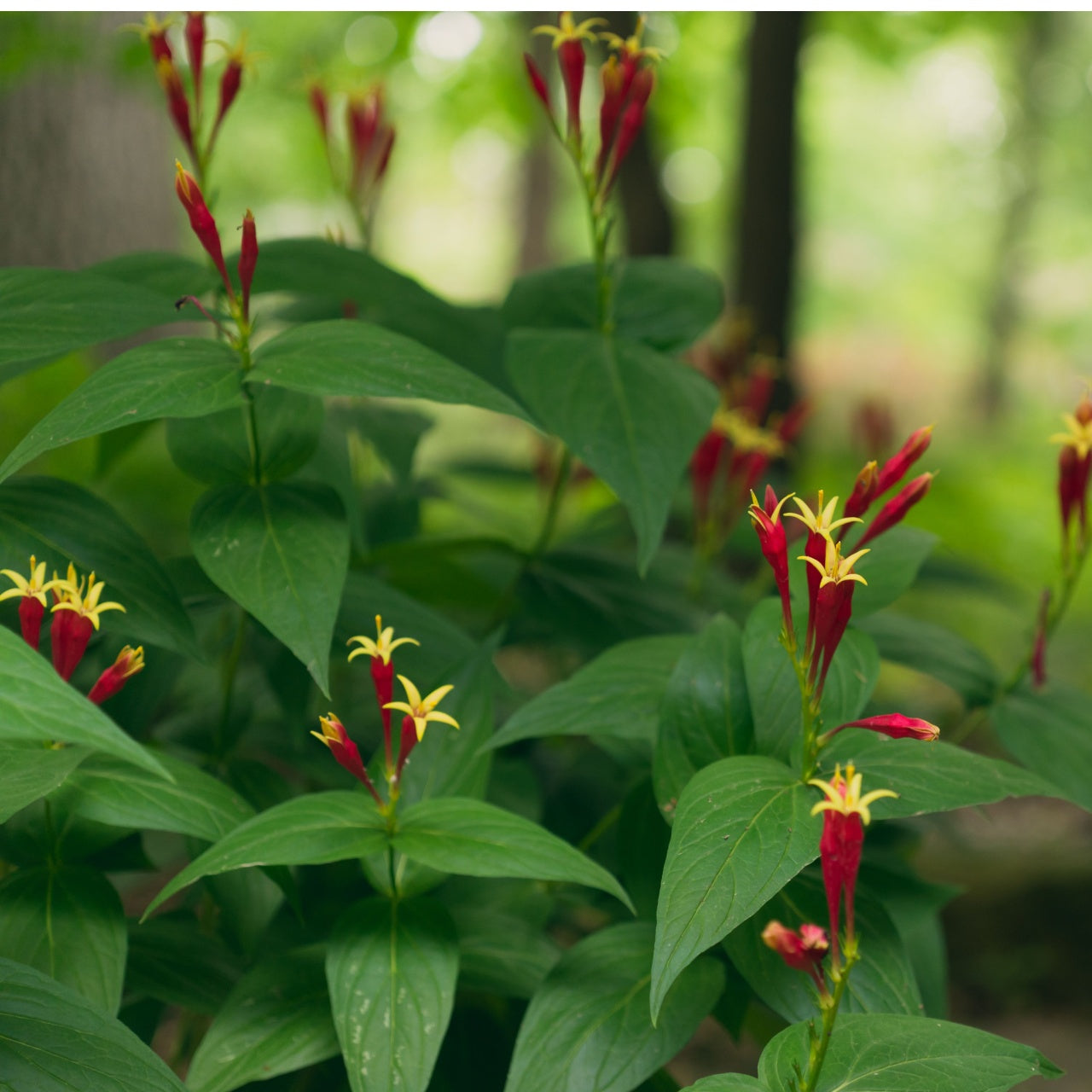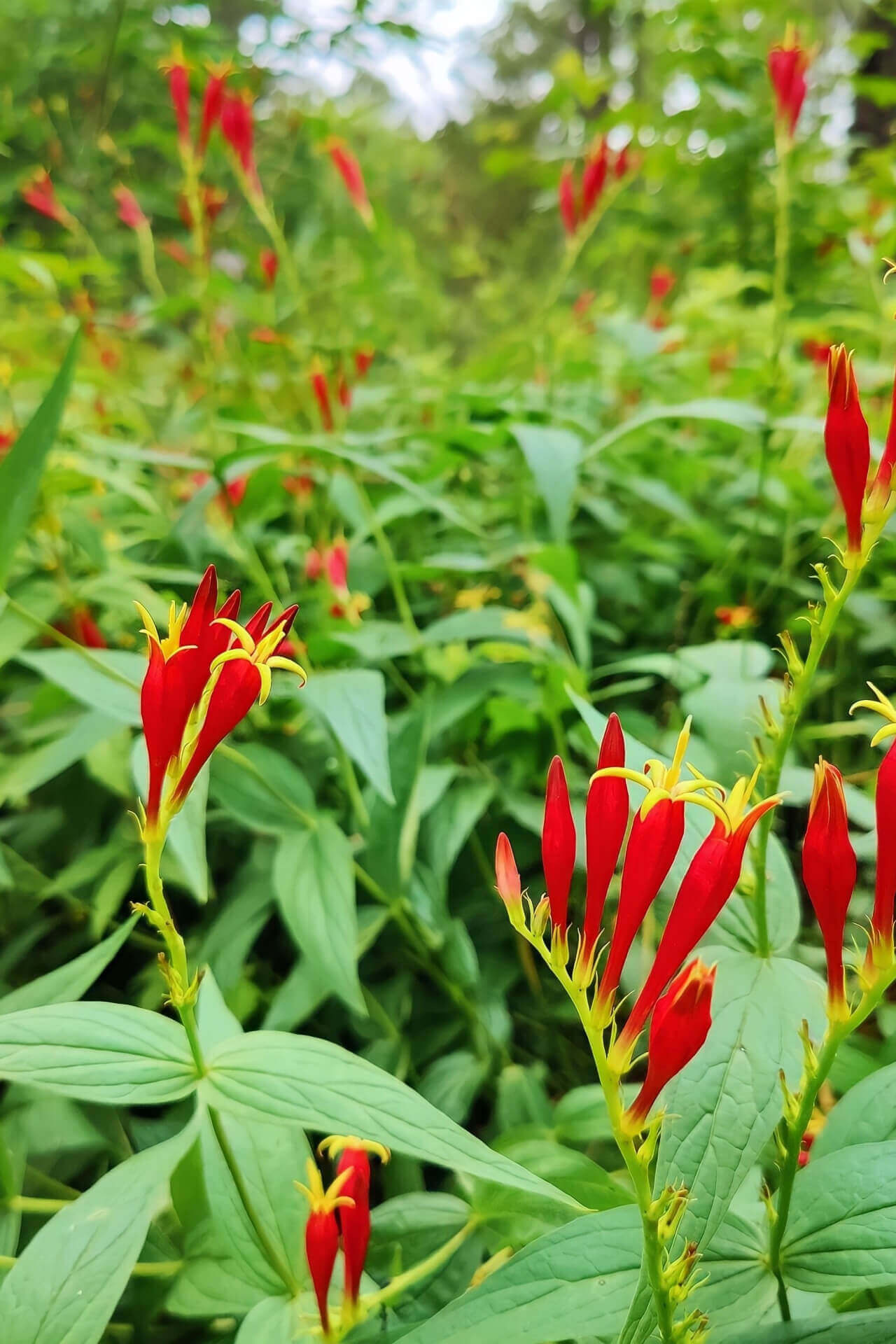Spigelia Marilandica For Sale
The Spigelia Fire Pink perennial plant is an eye-catching red flower, whose unique shape makes it immediately recognizable. It is native to the southwestern and midwestern United States, but is oddly more popular in the United Kingdom and Europe. The clump-forming plant grows in a large, round shape like a bush, and while flowers can look sparse against its foliage, they are striking.
Indian Pink Plant Details
Family: Loganiaceae
Light Requirement: Partial shade
Water Needs: Moderate
Height: 2 ft
Spread: 8-10 in
Growth Rate: Moderate
Soil Preference: Moist, Fertile
Bloom Time: May, June, July
Flower Color: Red
Wildlife Value: Birds, Pollinators
Notable Characteristics of Fire Pink Plant
The foliage of the star-shaped Fire Pink Plant is lush and emerald green. The stems are thin and flexible, covered in layered, oblong leaves with smooth edges. The leaves get thinner and shorter as they climb the stem. The flowers of Spigelia marilandica start a few inches from the top of the stem.
The lowest flower is the largest, and they grow slowly smaller towards the tip of the stem, arranged in a perfect descending line. The red, star-shaped blooms are tubular and upfacing with a bright yellow center that is perfect for hummingbirds – the plant’s main pollinator.
Landscaping and Maintenance
In the wild, the spigelia marilandica seeds looks somewhat sparse; the blooms are small against its wide leaves and thin stem. But in a garden, this plant really comes alive. It thrives in light, filtered sunlight and can flourish without the heavy overgrowth of trees in its native woodland. This plant gets its name from the alkaloid contained in its roots and foliage, spigiline.
Exposure
Spigelia Fire Pink thrives best in partial to full shade. It prefers dappled light or filtered sunlight, making it ideal for woodland gardens or shaded areas where it can avoid direct, harsh sunlight that may scorch its foliage.
Height at Maturity
Over 12"
Usage
Shade Plant
Shipped As
Bare-root
Ships
USPS
Planting Zones
5-9






